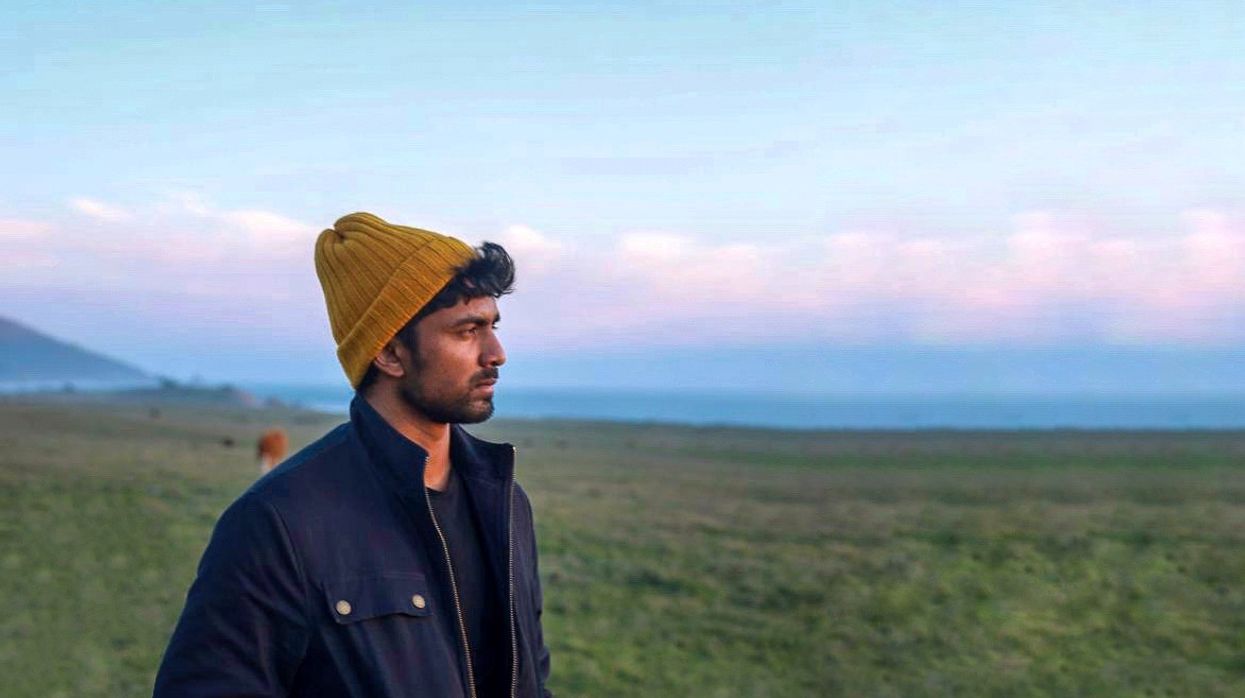How Is Being a Film Composer Like Being a Detective?
“The sound of waves crashing, water pounding, truck horns BLARING echo through her mind, getting LOUDER and LOUDER until..."

This post was written by Kalaisan Kalaichelvan.
A big part of being a film composer is looking for clues. Everything a film needs is already baked into its DNA, from the first written draft to the last locked cut. My job is to listen carefully, whether it’s a line of dialogue or a striking shot, from those clues, I have to extrapolate and build the sonic signature of the film.
When Zarrar and I had our first meeting aboutIn Flames, we spoke very little about music. Instead, we talked about memory, our individual experiences in South Asia, the pervasive culture of misogyny in Karachi, the sensory overload of traffic, the smells from street vendors, and the sounds of batons and whistles from watchmen policing women in public. These were all clues. Potential places to start playing from.

After that conversation, I started digging out these old field recordings I had during my own travels in India. His screenplay, consciously or not, was so deeply rooted in sound, so I knew defining that further would help us find the music.
One thing I was particularly drawn to in the screenplay was this recurring description of the sound of truck horns blaring. This is a common thing in a mega-city like Karachi, but it felt like a sound that seemed to follow Mariam around, like a ghost. Following that lead, I sent Zarrar this old personal recording I had of a group of conch horn players that I came across during my time in Chennai, India. It had such an otherworldly quality to it, not unlike truck horns if they were on acid.
He was intrigued and asked me to write a piece of music around it, something he could play on set during the shoot to set the tone. I went back to my studio and started fooling around with a conch horn, playing with different rhythmic ideas, manipulated, distorted, and layered on top of itself in different ways, and wrote this five-minute sketch. Zarrar loved it and it became the foundation of the score. We had found the sound for In Flames.

We generated a lot of weird and cool material from this. This process evolved over the course of a year. He would temp the early cuts of the film with these sketches, music that was written before I had seen even a single frame of the film. This is pretty unconventional in the world of movie music, but it was exciting to keep exploring as the film evolved in real-time. It felt like we were building something together and not just delivering a product.
One of the things we were both really keen on was to avoid all the usual horror music tropes and cliches. Zarrar wanted none of the usual creepy voices or “scary strings”. The film is already so textured, capturing the world of Karachi in beautiful detail. We wanted the score to similarly feel authentic to the time and place, to evoke a sense of “South Asian-ness” without necessarily becoming traditional South Asian music.
Like the film, we wanted to find a score that you could almost touch and feel.
As the film found its footing between the genres it played, so did the music. Mariam (Ramesha Nawal) is a character that is haunted, and we wanted sonic elements and triggers that could create that internal sense of distorted memory. At the same time, the music had to emotionally ground her.
We got to use such a diverse range of colors like the benju, bansuri, sarangi, parai drum, ghanjira, salangai bells and along with your usual string instruments (violin, viola, cello) to create a score that was at times alien and terrifying, and at others, intimate, delicate and moving.

I’m really proud of what we built together, and seeing In Flames come to Cannes, celebrated in this fashion with all the incredible artists that have worked on it. It’s the kind of thing that composers dream of being a part of. It goes to show that there are all kinds of ways to write a score and find the sound of a film. You just have to keep listening.
This post was written by Kalaisan Kalaichelvan.
Kalaisan is a composer and classically trained pianist based in Toronto, Canada. His compositional practice spans multiple disciplines, drawing from film, dance, theatre, installation, and deals with themes of translation and transference.

 Richard Gere and Uma Thurman in 'Oh, Canada' via Kino Lorber
Richard Gere and Uma Thurman in 'Oh, Canada' via Kino Lorber  Uma Thurman in 'Oh, Canada'via Kino Lorber
Uma Thurman in 'Oh, Canada'via Kino Lorber 









